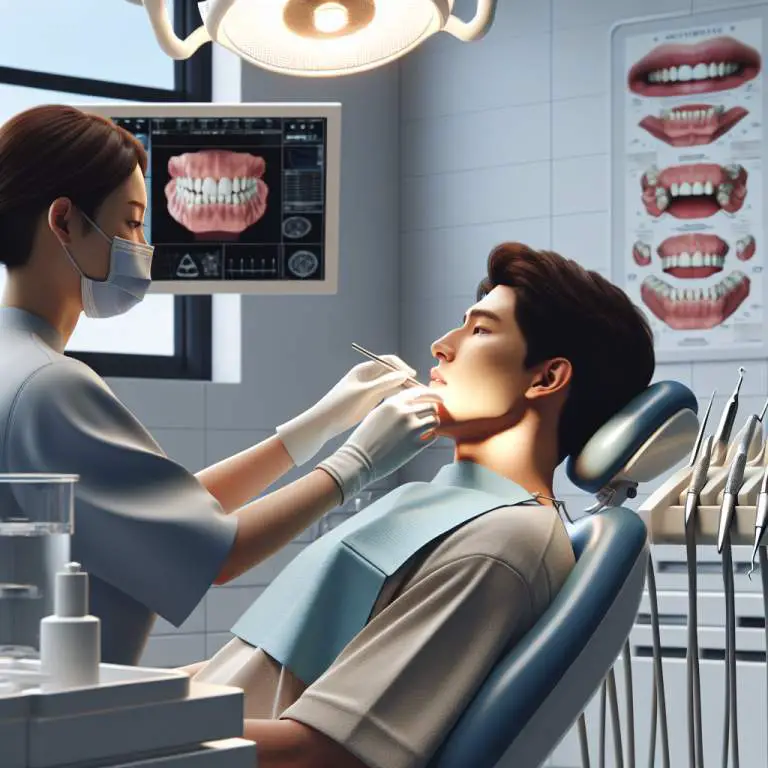What precautions should be taken when starting mewing for jawline enhancement?
When starting mewing for jawline enhancement, it’s important to practice correctly to avoid harm. First, ensure your tongue placement is right by pressing the entire tongue against the roof of your mouth, not just the tip. Avoid applying too much pressure; a gentle touch is enough. Lastly, consult with a dental or orthodontic professional before beginning, especially if you have existing jaw or dental issues, to ensure mewing is safe for you.

How does mewing work to enhance the jawline?
Mewing is a technique that involves positioning your tongue against the roof of your mouth. This position is supposed to help shape and define your jawline over time. The idea is that by keeping your tongue in this specific spot, you’re exercising the muscles around your jaw and neck.
This exercise can make the area look more toned and sharp. People believe that mewing can change how their face looks by making their jawline more noticeable. It’s like a workout for your face, where the goal is to improve how your jawline appears by using just your tongue.
What are the common mistakes to avoid while practicing mewing?
One big mistake people make with mewing is not placing their whole tongue on the roof of their mouth. Some only use the tip of their tongue, but it’s important to get as much of it up there as possible. This helps ensure you’re working out all the right muscles around your jaw and neck.
Another error is not being consistent with the practice. Mewing isn’t something that shows results overnight. It requires patience and regular effort, just like any other form of exercise. If you don’t keep at it every day, you might not see the changes you’re hoping for in your jawline.
Can mewing cause any harm if done incorrectly?
If someone doesn’t do mewing correctly, they might end up feeling discomfort or even pain in their jaw and teeth. This could happen if they’re pushing their tongue too hard against their teeth or if they’re holding their jaw in an unnatural position for too long.
Besides physical discomfort, doing mewing wrong could also lead to disappointment from not seeing results or even changes that weren’t what they wanted. That’s why it’s super important to understand how to do it right before starting.
Who should consider mewing for jawline enhancement?
People who are looking for a non-invasive way to improve how their jawline looks might want to try mewing. It’s especially appealing because it doesn’t involve surgery or any medical procedures—just a simple technique that anyone can try at home.
However, it’s mostly younger individuals who might see noticeable results since their bones are still growing and can be more easily shaped. Adults can try mewing too, but they should keep in mind that changes might be subtler and take longer to appear.
| Practice | Description | Tips for Safety |
|---|---|---|
| Correct Tongue Posture | Positioning the entire tongue against the roof of the mouth. | Start gradually, ensure breathing is not obstructed. |
| Lip Seal | Maintaining a gentle closure of lips without forcing them. | Avoid pressing lips tightly; keep it natural. |
| Nasal Breathing | Inhaling and exhaling through the nose instead of the mouth. | If nasal passages are blocked, consult a healthcare provider before starting. |
| Chewing Practice | Using mastic gum or similar to strengthen jaw muscles. | Do not overdo it; start with softer textures if necessary. |
| Jawline Exercises | Performing exercises specifically targeted at enhancing jawline definition. | Ensure exercises do not cause pain or discomfort in the jaw or neck area. |
| Mindful Swallowing | Focusing on swallowing with the back of the tongue rather than moving the whole jaw excessively. | Avoid aggressive swallowing; practice gently to prevent strain. |
What are the signs that you’re mewing correctly?
When you’re mewing correctly, your tongue should rest fully against the roof of your mouth. This position should feel natural and not forced. You’ll know you’re doing it right if you can breathe comfortably while maintaining this posture.
Another sign is improved posture. Mewing encourages proper alignment of the head, neck, and spine. Over time, practitioners often notice they stand straighter and feel less neck strain.
How long does it take to see results from mewing?
The time it takes to see results from mewing varies widely among individuals. Some people report noticeable changes in a few months, while others may need a year or more to see significant improvements.
Persistence is key. Consistent practice over time is crucial for achieving the desired effects on jawline definition and facial structure. Patience and dedication are essential components of successful mewing.
Are there any scientific studies supporting the effectiveness of mewing?
Currently, there is limited scientific research specifically addressing the effectiveness of mewing. The concept is relatively new in the field of orthodontics and lacks extensive empirical evidence to support its claims.
However, some related studies on orthotropic therapy—a broader field that includes principles similar to mewing—suggest potential benefits for facial structure and airway health. Further research is needed to conclusively determine the efficacy of mewing practices.
Final Thoughts
Mewing has gained popularity as a technique for enhancing facial aesthetics, particularly the jawline. While anecdotal evidence suggests it can be effective, scientific validation remains scarce.
If you decide to try mewing, focus on correct technique and be patient for results. Remember that individual outcomes can vary greatly, and consult with a healthcare professional if you have concerns about your oral or overall health.







